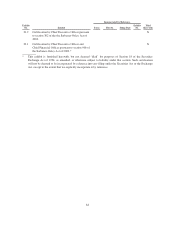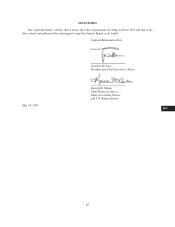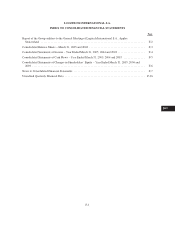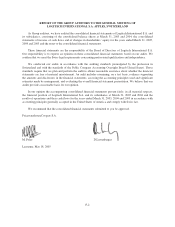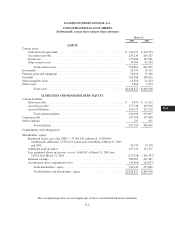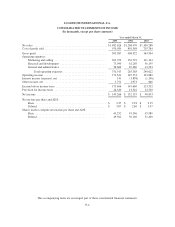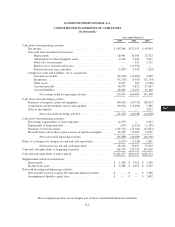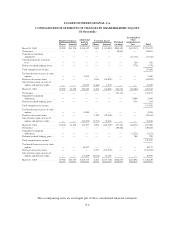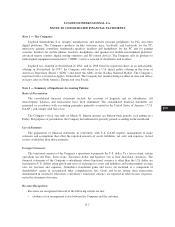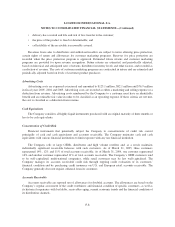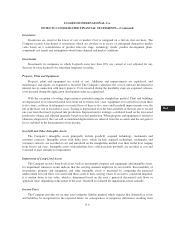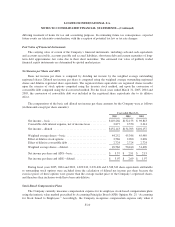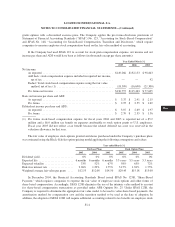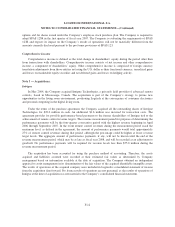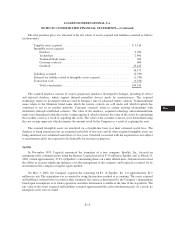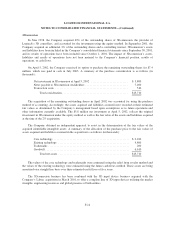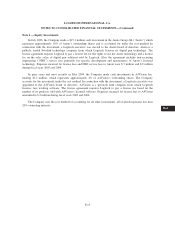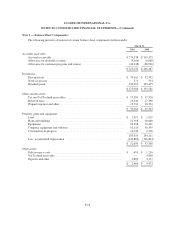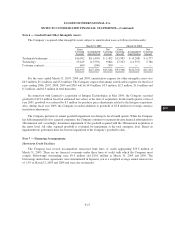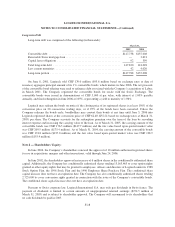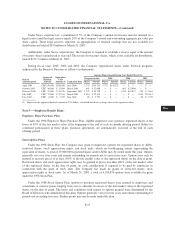Logitech 2005 Annual Report Download - page 112
Download and view the complete annual report
Please find page 112 of the 2005 Logitech annual report below. You can navigate through the pages in the report by either clicking on the pages listed below, or by using the keyword search tool below to find specific information within the annual report.
LOGITECH INTERNATIONAL S.A.
NOTES TO CONSOLIDATED FINANCIAL STATEMENTS—(Continued)
Inventories
Inventories are stated at the lower of cost or market. Cost is computed on a first-in, first-out basis. The
Company records write-downs of inventories which are obsolete or in excess of anticipated demand or market
value based on a consideration of product lifecycle stage, technology trends, product development plans,
component cost trends and assumptions about future demand and market conditions.
Investments
Investments in companies in which Logitech owns less than 20% are carried at cost adjusted for any
decrease in value deemed to be other than temporary in nature.
Property, Plant and Equipment
Property, plant and equipment are stated at cost. Additions and improvements are capitalized, and
maintenance and repairs are expensed as incurred. The Company capitalizes the cost of software developed for
internal use in connection with major projects. Costs incurred during the feasibility stage are expensed, whereas
costs incurred during the application development stage are capitalized.
With the exception of tooling, depreciation is provided using the straight-line method. Plant and buildings
are depreciated over estimated useful lives from ten to twenty-five years, equipment over useful lives from three
to five years, software development over useful lives of three to five years and leasehold improvements over the
life of the lease, not to exceed five years. Tooling is depreciated over the forecasted life of the tool, not to exceed
one year from the time it is placed into production. Depreciation for tooling is calculated based on the forecasted
production volume and adjusted quarterly based on actual production. When property and equipment is retired or
otherwise disposed of, the cost and accumulated depreciation are relieved from the accounts and the net gain or
loss is included in the determination of net income.
Goodwill and Other Intangible Assets
The Company’s intangible assets principally include goodwill, acquired technology, trademarks and
customer contracts. Intangible assets with finite lives, which include acquired technology, trademarks and
customer contracts, are recorded at cost and amortized on the straight-line method over their useful lives ranging
from four to ten years. Intangible assets with indefinite lives, which include goodwill, are recorded at cost and
evaluated at least annually for impairment.
Impairment of Long-Lived Assets
The Company reviews long-lived assets, such as investments, property and equipment, and intangible assets,
for impairment whenever events indicate that the carrying amounts might not be recoverable. Recoverability of
investments, property and equipment, and other intangible assets is measured by comparing the projected
undiscounted net cash flows associated with those assets to their carrying values. If an asset is considered impaired,
it is written down to fair value, which is determined based on the asset’s projected discounted cash flows or
appraised value, depending on the nature of the asset. Goodwill is evaluated for impairment at least annually.
Income Taxes
The Company provides for income taxes using the liability method, which requires that deferred tax assets
and liabilities be recognized for the expected future tax consequences of temporary differences resulting from
F-9
CG
20-F
LISA


